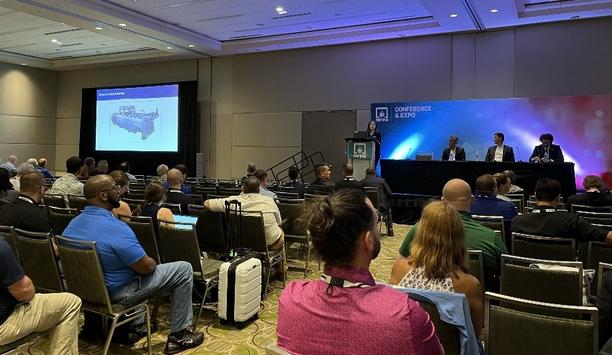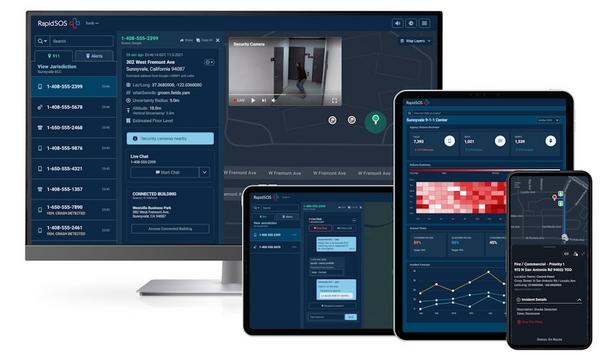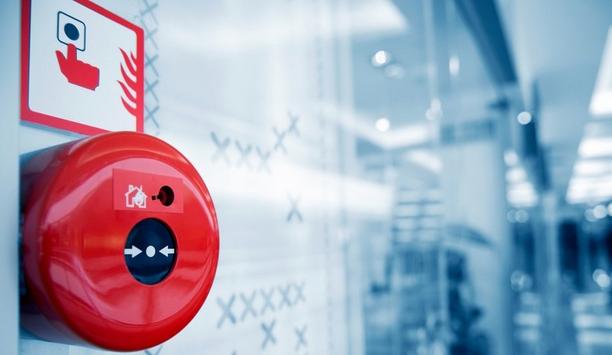In Ann Arbor, Michigan, USA, in May 2022, a helmet camera recorded firefighters extinguishing a truck fire along I-94, catching every detail as sparks flew and firefighters hosed down the truck to suppress the blaze. Firefighters also hosed down the grass on the side of the freeway to put out hot spots and prevent a grass fire, MLive.com reported.
The helmet-cam was part of a voluntary program that involves Ann Arbor firefighters wearing cameras when responding to active structure fires to capture video that can be used as a training tool, in order to better understand what went right and what went wrong. Video can also be released to the public to showcase how tax dollars are being spent. A focus on structure fires precludes any concerns about privacy.
Helmet-cams used by firefighters
Helmet-cams used by firefighters can provide a valuable tool for training and post-incident analysis
Helmet-cams used by firefighters can provide a valuable tool for training and post-incident analysis. On the other hand, they could impact how a firefighter does his or her job or even violate privacy concerns and/or the public trust.
While debate around the use of body-cams by law enforcement officers has mostly been settled, opinions still vary about the use of helmet-cams by firefighters. In one sense, the rules and regulations have not caught up with the technology, including smaller (and inexpensive) video cameras that can easily (and even discreetly) be mounted on a firefighter’s helmet.
Some departments have banned use of helmet-cams, while others have sought to restrict and control their use. Still others haven’t given it much thought.
Multiple perspectives for post-incident analysis
An advantage of helmet-cams is to record video of the actions of officers and firefighters at an incident and to provide multiple perspectives for post-incident analysis. Critiquing performance is a learning tool to encourage continuous improvement. In case of an injury or line-of-duty death (LODD), helmet-cam footage provides an unblinking record of exactly what occurred.
If a time element is being assessed, a helmet-cam video can display each activity along with a time display, thus eliminating the need for a stopwatch.
Clear and time-marked audio recording
In addition to video, helmet-cams can provide a clear and time-marked audio recording, not limited by radio-frequency interference. (Audio recordings are subject to additional privacy concerns in some jurisdictions.)
A possible downside of using helmet-cams is to distract a firefighter from his or her duties or to narrow their focus to the detriment of a broad awareness of their surroundings. It is important that a firefighter not miss something that is happening at the periphery of his or her line-of-sight.
Helmet-Cams can distract a firefighter’s attention
Conscious of how they appear in a video recording, a firefighter might be more guarded in their actions or words; at the other extreme, they might be tempted to “show off” for the camera by taking greater risks to provide more dramatic footage.
A firefighter with a helmet-cam might also become preoccupied with operating the camera to optimize video to the detriment of other concerns. Becoming fixated on the technology can distract a firefighter’s attention from the real job at hand.
Creating a policy that addresses issues are helmet-cams use
Departments should consider carefully the issues surrounding helmet-cams and create a policy
Departments should consider carefully the issues surrounding helmet-cams and create a policy that addresses those issues. Fire service leaders may benefit from collaborating with local police leaders who have worked with body-cam video and know the possible evidentiary value of video that can be captured on the devices.
Fire departments should be aware that any captured footage may have evidentiary value, if it relates to a crime or police internal affairs investigation.
Unlike body-cams used by police, which download video to the department at the end of a shift and are covered by department policy, helmet-cams are less restricted and less well-managed. Firefighters may even own their cameras.
Privacy concerns surrounding the use of helmet-cams
Some fire departments, such as Houston, San Antonio, and San Francisco, have banned helmet-cams because of privacy concerns and worries about how a video might embarrass a department.
Privacy concerns include the use of helmet-cams in medical calls, which make up most a firefighter’s daily responses. There should be rules that ensure that videos do not eventually make their way to Internet sites such as YouTube. In New Jersey, for example, Cathy’s Law (passed in 2012) restricts images and recordings at emergency scenes, such as motor vehicle accidents.







































